Language: Español
Decision making tools from sociocracy in this article
Many organizations are intrigued by the idea of self-management using circle-based frameworks and other decision making tools from sociocracy. However, it can be intimidating to implement those methods. You’ll have to do research, train everyone, implement — months or even years of transition time. And regular work needs to get done as well! I always compare changes in governance to beating heart surgery. Tricky — at the very least.
Is there an easier way? Most of all, is there a safer way? Something that’s not all-or-nothing but more step-by-step? Luckily, sociocracy lends itself to that. Start with something and then add more features if and when you want. You do not have to ask anyone for permission. You have full power over your self-management method.
The 3 tools presented here don’t need long explanations or trainings. You can do a small-scale experiment and evaluate how it went. When you’re ready to hear more beyond those three tools, I am happy to point you to the next step.
I picked these three tools because, in our experience, these are the tools that our training participants bring into their companies and that stick the most. Try them and see what you think.
Using rounds in meetings
Rounds are the most contagious tools from sociocracy for improving the decision making. The basic idea is ridiculously simple: everyone gets a turn to speak, one by one. Yes, that’s it. (I promised easy, right?)

How to use rounds
The easiest way is to do rounds is to sit in a circle and follow a natural order by where people sit. When I see that the person next to me is speaking, I know I will have my turn next. That also helps people to mentally prepare for their turn. In online-meetings, we encourage facilitators to call on two people at a time so the second one can get ready. (Which also means they will have their contribution somewhat pre-sorted!)
Obviously, it helps to have a facilitator to do rounds. We also do not recommend doing rounds in a group bigger than 8 or 9 people. (If your group is larger, continue reading to tool #3.)
Benefits of using rounds
Rounds have benefits for both sides, speakers and listeners. Let’s look at the speaker first. What is inherent in rounds is that everyone’s voice matters. Equally. What I say matters as much as what my co-worker says. And what my co-worker says matters as much as what I say. One might have more insight on a given topic than the other but good thoughts sometimes come from unexpected places.

Rounds change the rules of the game so it doesn’t become a game of convincing each other. Instead, it becomes a game of sharing your thoughts and co-creation. It sometimes feels like we’re all giving our offering and put it in the middle of the circle where it can grow into something bigger and better than I could have come up with. When I am speaking I know I am protected from people wanting to prove me wrong. Rounds carve out a safe space to share.
What are rounds like for listeners? One benefit for listeners is that when I know it is not my turn and I know it will take another two or three turns until I can speak, I start to relax. I sit back and listen because there is nothing else to do. I can focus on the speaker, trying to understand what the issue on the table looks like from their view.
Rounds make it manifest that our views might be different. Beyond finding the absolute truth or pushing my own agenda, we honor the variety of experiences. All of a sudden there is space. And once there is space, solutions are more likely to emerge.
Typical reservations about using rounds
Are rounds artificial?
Maybe. After seeing how easily my children picked up rounds, I have given up on finding out what is artificial or natural. I find something else more important. Talking without order means you will be in “natural” flow of conversation. In Sociocracy For All, we call this debate style. Debate style: you say something and I will try and prove you wrong because my idea is better. Debate style brings along all the implicit and mostly unquestioned power dynamics, men speaking more often than women and so on. That means that deciding to not use rounds means making a choice, and it is a choice that has known, measurable disadvantages.
Are rounds hard?
Are rounds hard? Yes and no. In the beginning, rounds are hard for some people. Yes, changing your patterns is hard. But they are not complicated. Whenever I attend a (non-sociocratic) meeting where people talk over each other, I silently enjoy noticing how startled I am when I witness that.

Of course I myself am ego-driven and I have a ton of good ideas! But I also know that it only takes one person in the circle engaging in cross-talk and the good effects of rounds are lost. What do I do with all my brilliant ideas? I write them on a piece of paper. When it is my turn, I will often look at my piece of paper and realize that, after a few minutes of listening to others, about 90% of my ideas have either been named or, on second thought, they don’t seem all that great or urgent anymore.
Humbled, I am often grateful for having been forced to weed through what I say. And when people pass on their turn saying “All I wanted to say has been said” I feel the urge to get up and hug them in gratitude for not putting the group through endless repetitions. Which also answers the last reservation I hear very often: aren’t rounds lengthy? Maybe. But inconsiderate decisions, repetitive statements and emotional “clean-up” after disregard of team members take a lot of time too. Your choice!
Magic phrases to start using rounds
Next time you find yourself in a debate style discussion, try one of these two sentences:
- “I would really be interested to hear what everyone in the room thinks about this. Can we do a go-around and everyone shares, and we try to give not to interrupt each other?”
- “I notice how I want to say something but I don’t want to over-talk anyone else. Could we slow this down and talk one by one in a round so we all get to speak without having to compete?
Make better decisions with small group decisions
More a principle than a tool, sociocracy, like all frameworks building on distributed power, pushes authority to the teams on the “lowest” or most specific level. Those small teams will be the people who do operational work in that domain and have a defined area of responsibility and authority to govern their own team’s work, a key ingredient of self-management. As often as you can, let the people decide who are going to end up doing the work. There is much more to say about organizational structure but I promised easy, accessible tools, so let’s keep it simple.

A common reaction here is “but if we are all equals, shouldn’t we all decide together?” Although this sounds so intriguingly logical, it simply doesn’t carry over into reality. It is not how people are wired. In a large group, individuals will dominate the discussion or struggle to make themselves heard. Or they will disengage and give up on getting heard. Is that what we have in mind when we all want to be equals? Not really.
Deliberation in a small group makes it easier to listen to each other and to engage with each other. But then — how can we trust that those few people will make a decision that works for everyone who is affected by the decision? In short, how can we make sure everyone is heard and still have the benefits of an engaged discussion (ideally, in rounds)?
How to use small group decisions from sociocracy

A helpful solution is baked into sociocracy for decision making in small groups. It is not a compromise between small groups and an all-inclusive approach. It is truly a both-and: we include everyone by hearing their input. The input is taken into the team where they can engage with the input and come to a decision. A group can go through multiple iterations of feedback. Decreasing the number of decision-makers while increasing the number of input-givers is the best of both worlds.
Benefits of small group decision making
With more input and more deliberation, your organization’s decisions will get better. Oftentimes, decisions also get faster.
There is a side-effect of small group mandate that is big for me. I can relax. I don’t have to take care of everything. Not everything requires my opinion. We all have to make so many decisions every day that many of us are grateful not having to make one. Similar to rounds, small group mandate protects us from being too attached to our own opinions.
Typical reservations about small group decision making
We have seen implementations where a team rushed to make a decision which they knew was controversial as soon as sociocracy was implemented. Finally they were in charge and could just do as they pleased. Response by those affected? Big outrage. What had gone wrong? Decrease the number of decision-makers and increase the level of feedback. The interesting things is, you will get the feedback. Before making a decision, the feedback can be called input. After some decisions, the word to describe feedback may be outrage!
Trust in a small group of decision-makers has to be earned and maintained. No decision should be surprising. If a decision triggers strong reactions, the team did not do their homework. In the dance of feedback and decision-making, governance turns into a quiet, well-oiled machine.
How to start using small group decisions
Next time you sit in a meeting with more than 8 people, identify one agenda item that could be dealt with by a group of 4. Suggest a way to form the group members, decide how they are going to get input (and from whom) and suggest a schedule of presenting ideas — getting feedback — announcing decision that feels safe to your group. If you want an even better result, make sure the group is also clear on which channels they want feedback.
If your organization truly does not allow for smaller groups to make decisions, here is a compromise (and this is merely a compromise, not a both-and solution). Ask for a group to work out a proposal (using the same cycles of feedback etc) and to bring it to the large group for a decision. If this goes well a few times (especially with consent as a decision-making method!), you might be able to train your organization to trust small groups. Then you can hand over decision-making power to small groups more and more.
Magic phrases for encouraging small group decisions
- It does not seem a good use of our time to work on the wording for this in a large group. Can 4 of us take this on and bring it back?
- I trust that the three people who are actually running the ____ can make a decision here. Let’s do one more go-around where everyone gives them some input on this particular issue, and then we can let them run with it.
Consent decision-making
Oftentimes, organizations do not have a defined agreed-upon decision-making method, especially start-ups or young organizations in general. Groups often switch back and forth between consensus (=we all agree), autocratic elements (=the most dominant decide and the others don’t speak up) and majority vote (=the needs of the minority can be disregarded) without any clarity or intentionality on how they make their decisions. Again, absence of intentionality often leads to reinforcing underlying power structures. The nay-sayer in the consensus-run group has too much power (tyranny of the minority!), and voting lets the power tip towards the 51% (tyranny of the majority!), and the more dominant people will get their way.
In those systems, everyone loses. A consensus-run group will wear out as people will lose their drive to bring another idea forward just so it can be shot down. Majority vote can very easily miss out on great ideas from the minority and disengage up 49% of the people, and even more opportunity is missed in systems of hidden dominance and blunt autocracy.
How to use consent decision making
How can we make a decision so that everyone can have a say without the disadvantages of consensus decision-making? Consent decision-making is the solution from sociocracy.
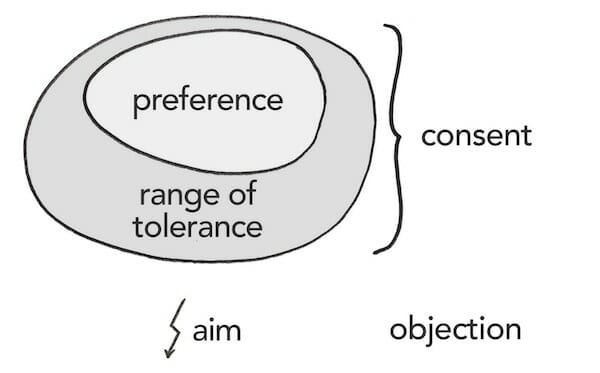
Consent is defined by “no objection”. Not having an objection is slightly different from agreeing. We refer to that extra space as the range of tolerance. We don’t have to find the overlap of our preferences in order to make a decision. Instead, we seek the overlap of our ranges of tolerances which gives us much more to work with. (Side note: some use consensus like consent. In that case there is no issue as long as that is done by everyone consistently.)
Benefits of consent decision-making from sociocracy
- Everyone’s needs will be considered. That does not mean everyone gets what they want but every objection can be heard and addressed.
- More buy-in. No one leaves the room feeling disengaged.
- No toxic behavior after. Consent is an active process. There is no “standing aside”, and no one can abstain. Everyone with consent rights has to consent — which also means everyone in the room is equally responsible. There is no “well I told you” after things go wrong!
- It saves time. We do not have to argue about everything until we agree or one gives up. If there is no objection, we consent, and if there is an objection, we deal. We always push for consent fairly early. Then we hear what the objections are which tells us where to best put our discussion time.
- Objections give us more information. Someone who votes “no” might never tell us what their concern was. In consent, we harvest more information which can only be better for everyone.
Typical reservations about consent decision-making from sociocracy
I have not been talking about objections a lot. (Objections are like tensions in Holacracy.) People are sometimes concerned and don’t trust that there is a way to address an objection. Too many of us have experienced what it is like when your concern is brushed off by the group. But this does not have to be the case. If a group gets used to consent decision-making, they build trust that their concerns will be considered. The healing effect of that can be felt, and the group relaxes. That leads to an upward spiral. As we get more relaxed, there is more space for listening and finding solutions, building even more trust.
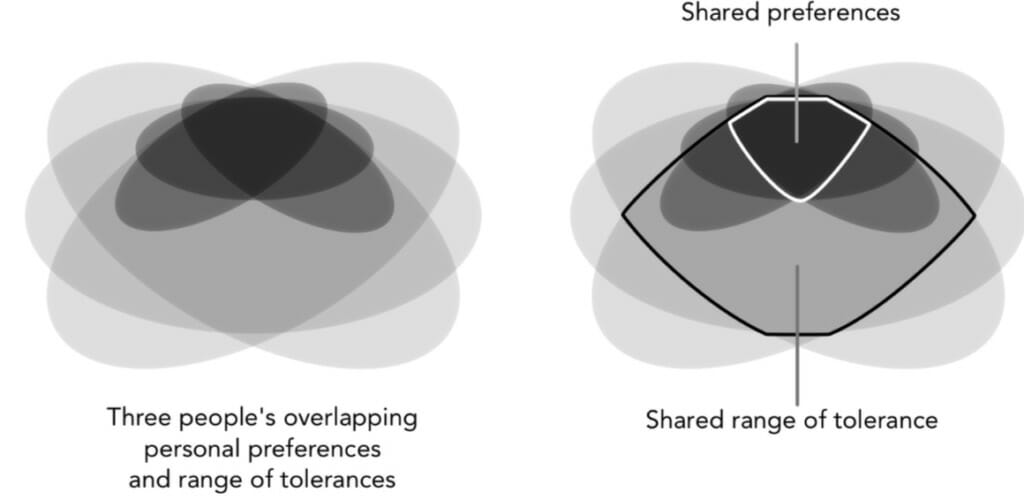
The definition for an objection is “carrying out this policy will interfere with the aim of the organization or team”. This simply means that you object when you see that a proposal or guideline will keep you from doing your work effectively.

Is a concern different from an objection? In this brief article, I have been using both interchangeably. Why? For me, there are exactly two outcomes from any concern/objection/tension or whatever. 1. You address it. 2. You don’t. I do not see any reason to make it more complicated. I have a hard time with any framework that involves judgment on whether an objection is “valid”. Because that shifts power to the people who decide which objections are valid (or to the people who implement the rules that guide what is valid). I don’t want to be equals under a set of rules made by someone else. I want to make the rules together. In sociocracy, any (governance and other) policy and any objection belongs to the group, and the group decides what to do with it.
How to start using consent decision-making from sociocracy
It might be a good idea to intentionally implement consent as your decision-making method. It might work best if you just formulate it in plain language: “From now on, a decision is made when no one in the group objects.”
Consent and dealing with objections is an art and a science but that’s for another time. For now, I want to give you two magic phrases that prime your team for consent as a decision-making method.
Magic phrases for consent decision-making from sociocracy

- I don’t think we can all get what we’d prefer here because there are just too many different needs on the table. How about we shoot for a decision that everyone in the room can work with instead of trying to make it perfect? Then we could try it out and see how it plays out.
- I want to be sure that no one in the room walks away with a decision that is going to keep them from doing good work. Let’s talk until we have a decision that is good enough for everyone.
What to expect after implementing decision making tools from sociocracy
You might run into issues using rounds, small group mandate or consent. We have seen organizations implement sociocracy decision making tools, incrementally or half-heartedly and run into issues. Self-management isn’t easy or without bumps in the road. When things are not going as smoothly as you were hoping, that’s just feedback. No reason to panic or to throw in the towel. (Peek into this article to read about the most typical struggles and how to fix them.)
Sociocracy gives you the option of starting small. But the more features you “unlock”, the more benefit you will get. As you might have noticed, the three tools named here support each other:
- Consent is easier to do with small group mandate and rounds.
- Rounds are more doable in small groups and more focused and targeted with consent decision-making.
- Small group mandate can be boosted by consent decision-making and rounds.
Many Voices One Song
Many Voices One Song is the manual for sociocracy – a comprehensive manual covering all topics relevant to sociocracy in organizations.
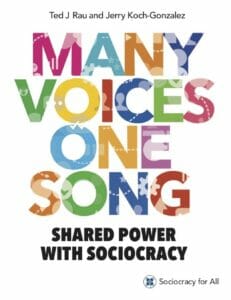
And you don’t even have to stop there. Add sociocratic elections, roles, term ends and evaluation, feedback loops, the art of dealing with objections, role improvement, meeting format, collaborative ways of generating proposals, and most of all honest and constructive feedback, and your self-governance will be smooth, gentle and quiet.

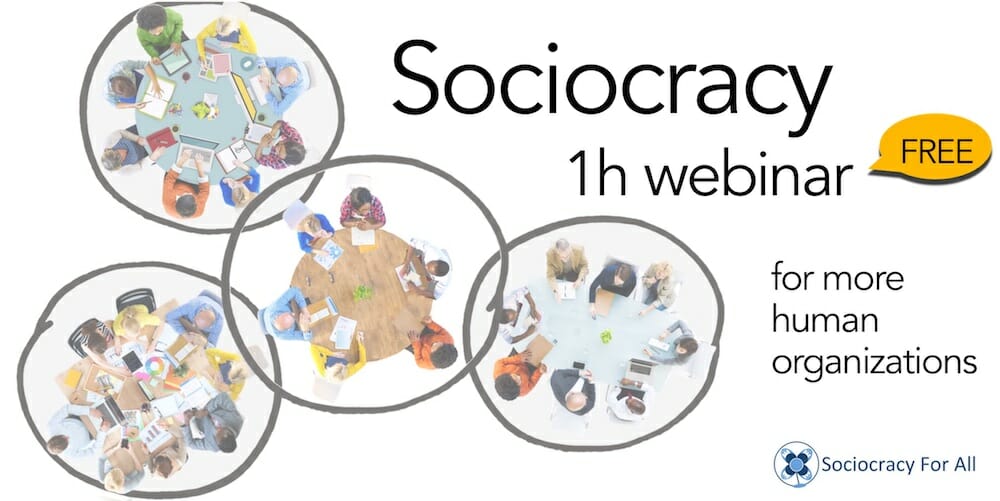
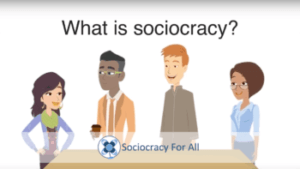



Leave a Reply
You must be logged in to post a comment.